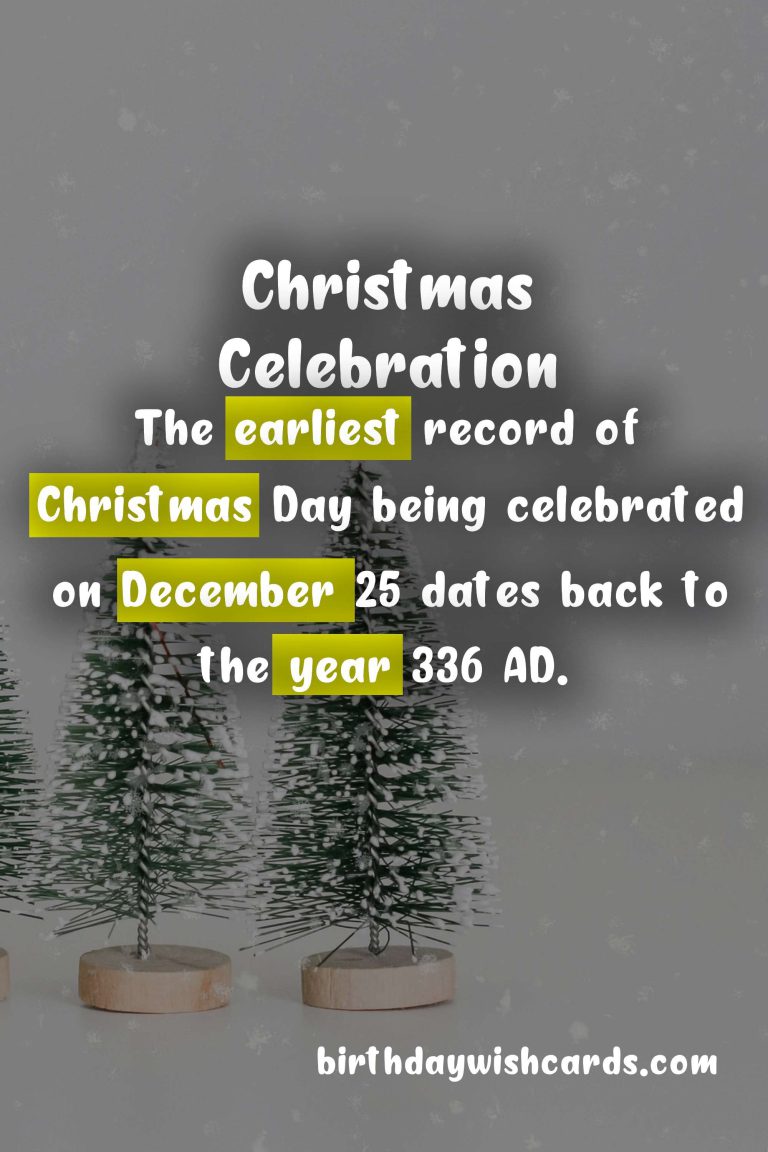Celebrating Christmas Day on December 25
Christmas Day, observed annually on December 25, is one of the most cherished holidays around the world. It is a time for gathering with family and friends to celebrate the birth of Jesus Christ, exchange gifts, and share love and joy throughout communities.
With a history spanning centuries, Christmas traditions have evolved and been shaped by diverse cultures and religions. From decorating Christmas trees to singing carols and enjoying festive meals, there are countless ways to experience the magic of this special day.
This comprehensive guide explores the history, significance, and symbolism of Christmas Day, as well as popular traditions and customs celebrated worldwide. Let’s discover what makes Christmas Day so enchanting!
The History of Christmas Day
Christmas Day began as a commemoration of the birth of Jesus Christ, whom Christians believe to be the Son of God and the Savior of humanity. Although the Bible does not specify the exact date of Jesus’ birth, December 25 was chosen to align with existing pagan winter festivals such as Saturnalia and Sol Invictus.
The earliest recorded celebration of Christmas on December 25 dates to 336 AD in ancient Rome. By 354 AD, it was officially recognized as a public holiday in the Roman Empire. During the Middle Ages, Christmas became a significant religious and cultural festival across Europe. It wasn’t until the 19th century that Christmas Day gained widespread popularity beyond Christian communities, evolving into a global holiday celebrated by people of many backgrounds.
The Significance and Symbolism of Christmas Day
For Christians, Christmas Day is a sacred occasion marking the birth of Jesus Christ, believed to be the Son of God and redeemer of humanity. The term “Christmas” comes from “Christ’s Mass,” referring to the religious service honoring Jesus’ birth.
Over the centuries, many symbols have come to embody the spirit of Christmas, each with its own special meaning:
- Christmas Tree: Originating in 16th-century Germany, the Christmas tree symbolizes eternal life and has become a central feature of holiday décor.
- The Star: According to the Bible, a bright star guided the Three Wise Men to Jesus’ birthplace, symbolizing hope and guidance.
- Nativity Scene: Displays the birth of Jesus with figures representing Mary, Joseph, the baby Jesus, shepherds, angels, and the Magi.
- Wreath: A circular garland representing eternity and the unending cycle of life.
- Holly and Ivy: Traditional plants used in Christmas decorations, symbolizing protection and everlasting life.
Popular Christmas Day Traditions and Customs
Christmas Day is filled with traditions that bring families and communities together. Some of the most beloved customs include:
Gift Exchange
The tradition of exchanging gifts dates back to the gifts brought to Jesus by the Three Wise Men. Today, giving presents is a cherished way to express love, gratitude, and goodwill during the holiday season.
Decorating Christmas Trees
Adorning trees with lights, ornaments, and a star or angel on top is a widespread tradition. It is believed to have originated with Saint Boniface in the 8th century, who used the evergreen tree to teach Christian faith to Germanic peoples. Today, Christmas trees brighten homes, public spaces, and town squares worldwide.
Singing Christmas Carols
Caroling is a joyful tradition enjoyed by people of all ages. These songs, both religious and festive, capture the spirit of Christmas. Favorites include Silent Night, Joy to the World, and Deck the Halls.
Festive Meals
Sharing special meals with family and friends is an essential part of Christmas celebrations. Traditional dishes vary by region, but often feature roasted meats, seasonal vegetables, and festive desserts such as fruitcake and mince pies.
Celebrating Christmas Day Around the World
While Christmas Day is rooted in Christian tradition, its spirit is embraced by people of all faiths and backgrounds. Different countries and cultures add their own unique customs, enriching the global celebration.
- Europe: Many European countries display elaborate Nativity scenes (“crèches”) in homes and public spaces. Christmas markets with crafts, food, and festive cheer are especially popular in Germany, Austria, and France.
- Japan: In Japan, Christmas is celebrated as a festival of lights, with cities adorned in spectacular illuminations. Though not a traditional religious holiday, it has become a joyful occasion focused on happiness and togetherness.
- Philippines: Home to one of the world’s longest Christmas celebrations, Filipinos observe a nine-day “Simbang Gabi” (night mass) leading up to Christmas Eve, accompanied by lively parades, street decorations, and community festivities.
- Latin America: In countries like Mexico, “Las Posadas” reenacts Mary and Joseph’s search for lodging, culminating in gatherings with piñatas, music, and food.
- Australia and New Zealand: Christmas falls during summer, so traditions often include outdoor barbecues, beach gatherings, and festive sporting events.
These diverse customs show how Christmas Day unites people across borders and cultures, bringing warmth and joy to communities everywhere.
The True Spirit of Christmas
At its heart, Christmas Day is about love, compassion, and togetherness. It encourages us to reflect on the values of kindness, generosity, and hope. Whether through religious observance or secular festivities, the holiday inspires acts of charity, family bonding, and community spirit.
As you celebrate Christmas Day, remember the deeper meaning behind the festivities—a time to connect with loved ones, appreciate your blessings, and share joy with those around you.
Key Takeaways
- Christmas Day is celebrated annually on December 25 to honor the birth of Jesus Christ.
- The date was chosen to align with ancient pagan winter festivals and was first recorded as a celebration in 336 AD in Rome.
- Christmas became a public holiday in the Roman Empire by 354 AD and grew in cultural significance during the Middle Ages.
- The name “Christmas” means “Christ’s Mass,” referring to the religious ceremony.
- Symbols such as the Christmas tree, star, Nativity scene, wreath, holly, and ivy represent the holiday

